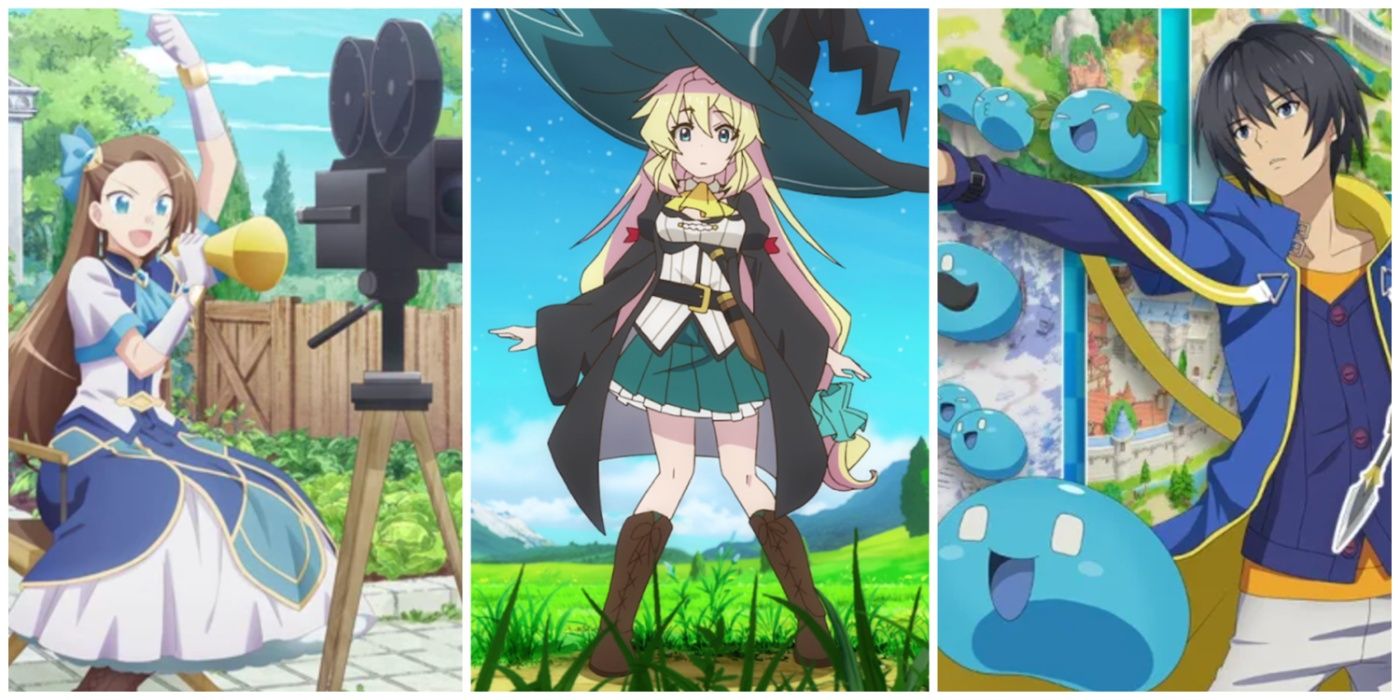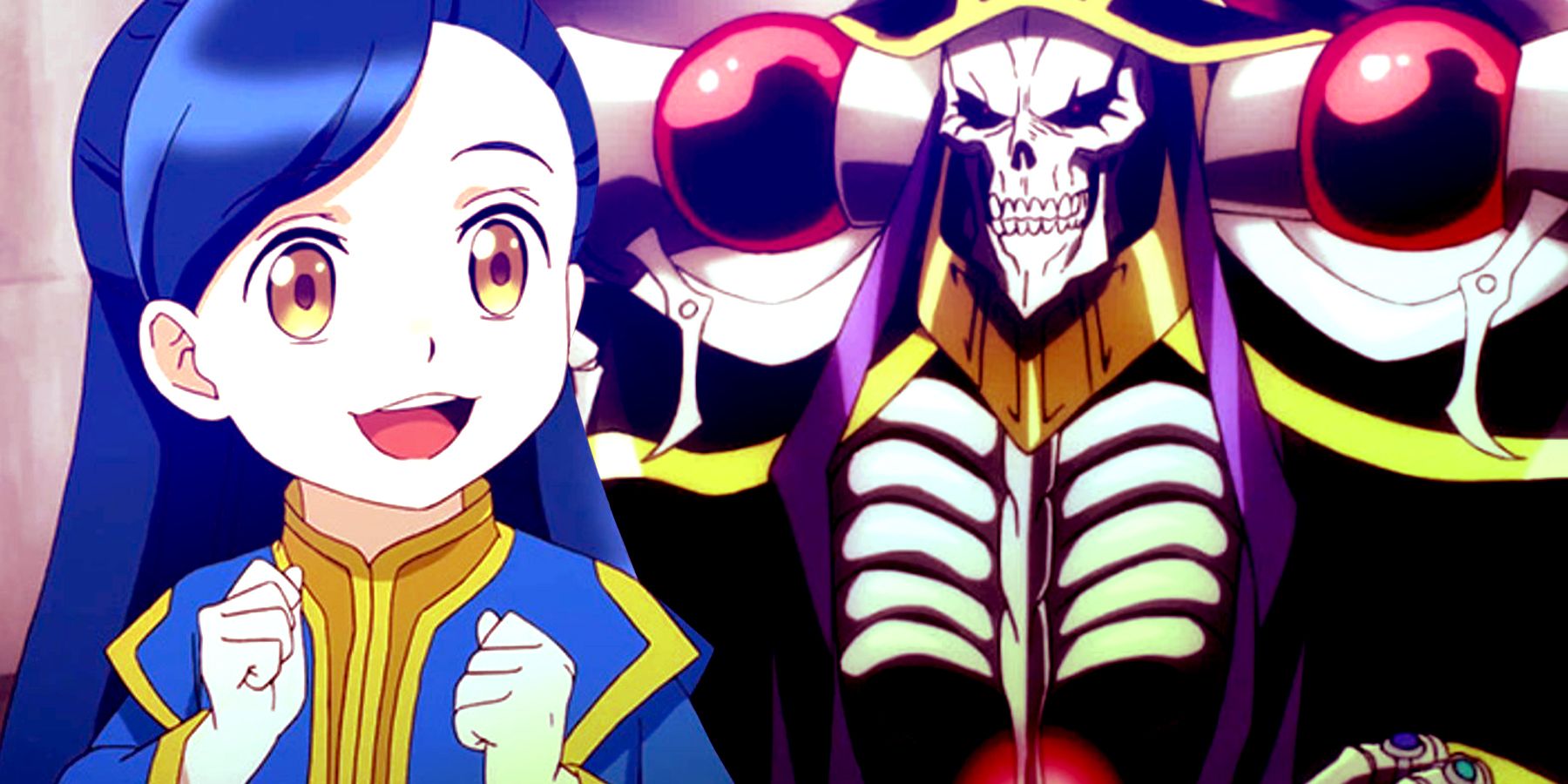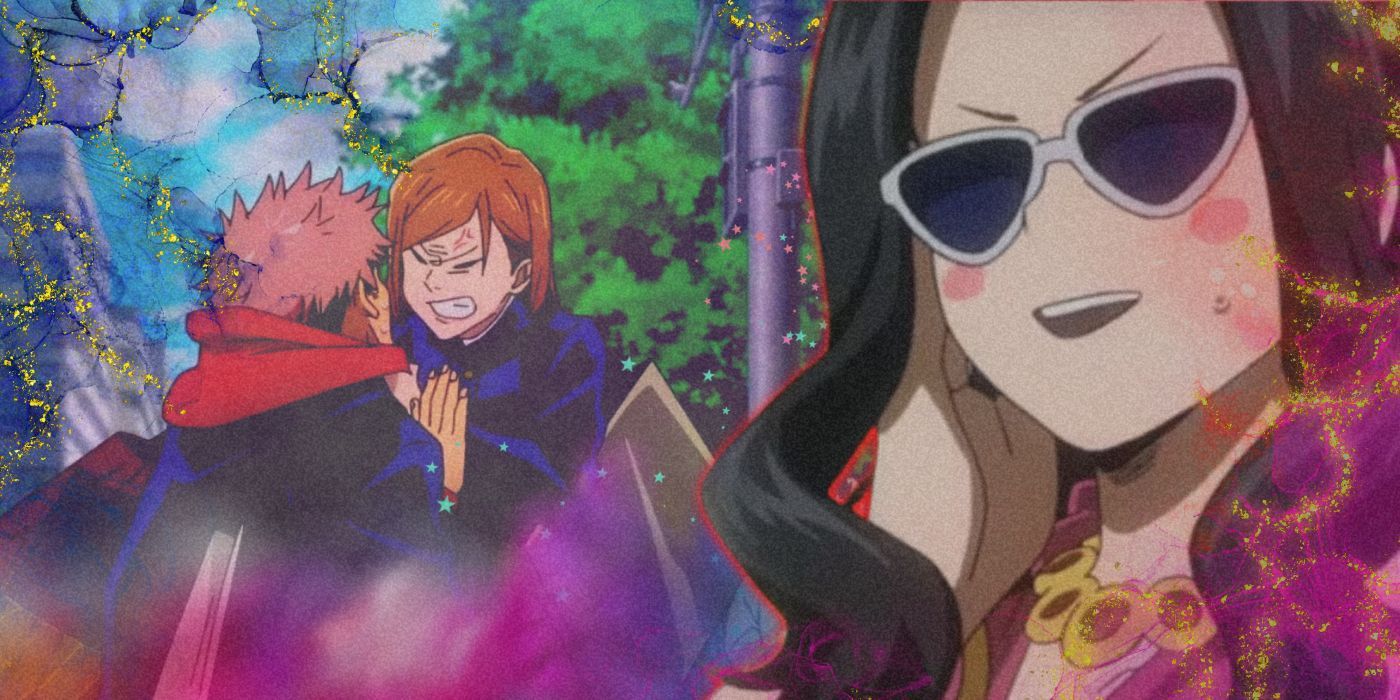Descriptions

Within the last 12 years or so, the isekai subgenre of Japanese anime took off and flooded the market with countless titles. By now, most anime fans have decided whether they love or hate isekai, with many of the subgenre's tropes either bringing in new fans or driving them away. Plenty of isekai tropes are overused or have aged badly, but open-minded fans may find plenty to like in the non-problematic tropes if they try.
Some of the best isekai anime titles, and even some of the mediocre ones, embody some fun tropes that can make the "trapped in another world" concept much more engaging in key ways. There's no getting past how formulaic isekai has become, even with the stronger titles. But if they're done right, certain tropes can make even predictable isekai series worth a watch and make the escapism adventure worth it in the end.

The Best Isekai Anime Streaming On Crunchyroll, Ranked
Multiple new isekai anime come out every season, and Crunchyroll has the best of the best, including Sword Art Online and Overlord.10 The Main Character Building a Quiet, Happy New Life
Represented In: I've Been Killing Slimes, My Next Life As A VIllainess
Inevitably, the main character of any isekai anime will get involved in some shenanigans, and their everyday life will be disrupted for the sake of an entertaining plot. Still, in some isekai anime, it's clear that in between the major plot points, the protagonist is living a cozy, ordinary life free of drama and violence.
Azusa Aizawa, for example, lived in happy seclusion for 300 years in her remote cottage while she killed slimes to level up. Katarina Claes did something similar in the shojo series My Next Life as a Villainess, and it was comforting to see her grow up as a humble, relatively normal girl who enjoyed her everyday life.
9 The Main Character Pursuing A Project Or Goal
Represented In: Tensura, Farming Life In Another World, Ascendance of a Bookworm
Some isekai protagonists wander aimlessly, like Yuji in I've Been Killing Slimes, and some pursue open-ended long-term goals, like Tanya Degurechaff in Saga of Tanya the Evil. The ideal middle ground is the trope where an isekai lead pursues a worthwhile project in a new world.
Myne, for example, sought to make books for herself as a cool do-it-yourself project, something she couldn't have done in her original life. And Rimuru Tempest in Tensura built up an entire city of monsters piece by piece, recruiting new citizens and putting them to work making something new.
8 Friendly Shopkeepers
Represented In: Shield Hero, Sword Art Online, Konosuba
Many isekai titles show the hero trying to integrate themselves into their new world's society and economy, which includes buying and selling things at local shops. It's a basic, but lovely trope for those shopkeepers to be friendly and helpful people who excel in customer service.
That trope helps make the protagonist feel more welcome, which is a great alternative method for attractive girls to fall in love with the hero for no reason. Sometimes, a friendly shopkeeper like Wiz in Konosuba might become a proper ally and temporary teammate, and not just someone who sells magic potions.

10 Anime Characters Who Love Shopping
Whether it's clothes, manga, or other miscellaneous items, some anime characters just can't stop spending money.7 RPG Visuals & Gameplay Mechanics
Represented In: Shield Hero, Sword Art Online, Konosuba, Black Summoner
Not all isekai titles actually show the hero getting teleported into their favorite JRPG title, but they may give the protagonist some convenient RPG-style visuals and gameplay mechanics for convenience. This makes the new world's rules more manageable for the protagonist and viewers alike.
This is a basic, but harmless trope that makes it easy to track the hero's progress and show how much further they can still go, from experience points to skill trees. Naofumi Iwatani in Shield Hero, for example, used the game-style HUD to realize just how many shield types he had invented, all on his own.
6 The Main Character Using Their One Specialty
Represented In: My Next Life As A Villainess, No Game No Life
Some isekai protagonists are ordinary people with no notable skills, such as salarymen, who must figure out fresh skills and magic spells in their new life. In other titles, the hero already has a specialty by the time they get isekai'd, giving them a head start and allowing the narrative to focus a little more.
In My Next Life as a Villainess, Katarina Claes was an expert in love and dating in games, so she used her social skills to create a new storyline for herself. And in No Game No Life, Sora and Shiro were game masters who enjoyed beating everyone at games in a new world.
5 The Main Character Using Meta-Knowledge Smartly
Represented In: My Next Life As A Villainess, I'm The Villainess, So I'm Taming the Final Boss
If an isekai anime hero gets themselves teleported into a video game world, they will already know how the game works and may know the plot, too. That allows the hero to use their meta-knowledge in crafty ways, all while hiding the fact they already know how the story will end.
This is especially helpful in dating sims, where heroines like Katarina Claes and Aileen Lauren d'Autriche know how to win someone's heart with all the right flags and avoid a bad ending. This trope becomes even more fun if outside factors disrupt the plot, forcing the hero to adjust and not rely entirely on meta-knowledge.

Tears of the Kingdom's Biggest Plot Hole Is Solved — Leaving Behind An Even Bigger One
Zelda series Director Hidemaro Fujibayashi finally addressed BOTW players' biggest concern about TOTK, but it only made things even more confusing.4 Benign, OP Protagonists Who Fight For Others
Represented In: Tensura, I've Been Killing Slimes
One of the most tiring isekai tropes involves the main character being massively overpowered just to gratify viewers who identify with the self-insert protagonist. However, this trope is more palatable if the hero fights entirely for the sake of their new friends, making their power noble rather than cheap.
Rimuru Tempest, for example, is compelling because he uses his vast powers to defend his idealistic new nation and give monsters a second chance. Azusa Aizawa was like that on a more personal scale in I've Been Killing Slimes, and she was properly challenged by foster motherhood because combat was no challenge to her at all.
3 Joining A Guild
Represented In: Sword Art Online, Konosuba
An isekai protagonist can go it alone if they're powerful enough, but in any world, people need a sense of belonging. That's how the "join a guild" isekai trope became such an endearing one, with the hero graciously joining a party of natives and fighting alongside them as trusted teammates.
Belonging to a guild and an adventurer team allows the hero to build on-screen chemistry with other characters, and they can share their achievements or perhaps politely compete during their quests. The guild's members can also serve as tour guides for the hero who doesn't yet know their way around.
2 Protagonists Changing Their Original Character
Represented In: My Next Life as a Villainess, I'm the Villainess, So I'm Taming the Final Boss
An isekai protagonist might get reborn as themselves, such as Kazuma Sato in Konosuba, while others are reborn in the body of someone who already lived in that new world. The reborn character must assume the original character's identity, but they're still free to invent their own lifestyle, no matter who their character originally was.
Usually, the character is changed for the better, such as Katarina Claes, who went from a spoiled bully to a kind, friendly girl who supports others. It's always amusing to see the other characters react in shock when Katarina or Lauren radically change their attitude and do things the original never would even consider.
1 Exploring the World To Fill Out the Map
Represented In: Tensura, Re:Zero, My Isekai Life
Some isekai protagonists focus on their own goals and don't bother wandering the world, such as Myne, but others are happy to roam the land and see what's out there. That helps reinforce the free-form escapism of isekai, a virtual tour across the entire map.
Tourist-style isekai leads help speed along the worldbuilding, since they willingly explore new lands and new nations, allowing fans to fill out a mental map. After a point in Tensura, for example, Rimuru Tempest had figured out the entire world's map, and wandering the world was practically the only thing Yuji did in My Isekai Life.
Add a review